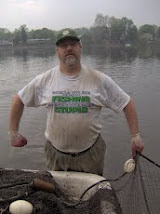LOOK BUT DON’T TOUCH
I will
not pretend to know anything about coral reefs, but from everything I’ve read
the coral reefs are on the decline globally. The numbers are staggering. Some
estimates put the loss of coral reefs upwards to 80%. They are dying off from
climate change, disease, ocean acidification due to human effluent runoff, overfishing
and other stresses. Though they cover just 1 percent of the world’s ocean coral
reefs are home to 25% of her marine life. Home not only to thousands of species
of fish, but thousands of invertebrate species, this biodiverse ecosystem is
like an underwater rainforest. They also absorb much of an ocean wave’s intensity
and protect the coast from erosion normally caused by currents and storms. Coral
reefs are integral to our planet, they are the backbone of our existence.
The Great
Florida Reef is the only coral reef in the continental United States and it is
the third largest in the world. The first is Australia’s Great Barrier Reef and
second is off the coast of Belize.
A PRECIOUS GIFT
Although
it may seem I know something about coral reefs, I’m really just a spectator. I
certainly can attest to their beauty. When healthy and blooming with life to
snorkel or dive amongst these living animals is a precious gift that must be protected. There is a great fear that coral reefs may
not survive to the end of this century, but efforts are underway to help. Over
the past several decades a heightened awareness of man’s affect on the ocean
and the reefs has been a huge help. Eliminating the use of common sunscreen
chemicals like oxybenzone and octinoxate, which cause coral bleaching or whitening
of the coral, helps. Many governments now have set aside marine preserves and sanctuaries,
like the Looe Key Preservation Sanctuary which are great steps in keeping coral
reefs healthy and safe.
WHEN I GROW UP
But the
thing is coral take a long time to grow, even under the best conditions. Coral
is made up of countless little critters called polyps and as their lifespan
ends other polyps build on top of their exoskeleton and eventually the coral build-up
their colonies. Because these polyps are infinitesimal, some measuring just millimeters
across, if left to nature alone, the reefs may never regain their resplendent brilliance
in our lifetimes.
NATURE NEEDS A HELPING HAND
We were
unable to dive on any of the four days we had set aside on our recent visit to
the Florida Keys. On the way to Key West we stayed for a few days at the Looe
Key Dive Resort, and on our return, we stayed at Amy Slate’s Amoray Dive Resort
in Key Largo. All our scheduled dives were cancelled because of a small craft
advisory. Disappointed about not diving to see the coral reefs, a divemaster at
the Looe Key Dive Resort told us about two independent restoration efforts to replenish
the coral reefs.
The Mote
Marine Laboratory takes “rescued” fragments of coral and under optimal conditions
in their laboratory tanks study and grow the coral until they are able to be “replanted”
in the reefs. Mote is on Summerland Key. They only welcome visitors on a strict
schedule twice a week for just one hour each of the days. So, if you’re
interested in seeing their work at Mote, call ahead to see if your timing is
good.
The other
restoration program is a bit more hands on in their approach and they actively
seek out volunteers to help in their efforts to replenish the coral reefs. The
not for profit Coral Restoration Foundation facility is more approachable with
displays and a gift shop and videos to watch. They are on Islamorada and
walk-ins are welcome.
Their
restoration program is similar to Mote as they too take rescued fragments of
coral to grow. But, at the Coral Restoration Foundation they suspend the coral
fragments from underwater “trees”. When large enough, they too are replanted on
the reef surface. They seek out volunteers who have at least 30 dives who can
come clean the trees of algae and mollusks and when the fragments of coral have grown enough they too are replanted on the reef surface.
We visited
both facilities when our dives were cancelled and were fascinated by the entire
process. We had no idea this sort of restoration program was going on. Both are
fascinating and informative and best of all, free, although if you do want to
dive with the Coral Restoration Foundation they ask for a nominal fee. They will
train and provide necessary tools. See their website for scheduled dives to the trees and the replanting sites.





































No comments:
Post a Comment